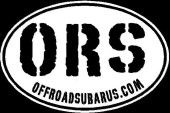Ratbag
Administrator
- Joined
- Jan 1, 2012
- Messages
- 7,498
- Location
- Bayside, Melbourne, Vic
- Car Year
- MY06, MY10
- Car Model
- Forester SG & SH
- Transmission
- 5MT/DR & 4EAT Sports
Gidday Mr T
I just weighed the OEM ABS guard. It weighs around 2.75 kgs. That makes the Ravolar one around 2.5x the weight. This of itself should make it a lot stronger, even if it were a non-composite material.
As a composite, it should be far tougher than the OEM one.
As I mentioned before, the design of the OEM guard is as much of a problem as its (lack of) strength. If the OEM guard didn't turn into a scoop, it would be a big help. I'm thinking of riveting an aluminium strip along the front of mine so that it doesn't pull out from above the lip of the lower bumper. I reckon about 20-25 mm would be more than adequate to prevent this from happening.
At the bottom of the Phasmid Track in Bunyip SP, I slid along on my OEM guard for around 15-20 metres (with my wheels off the ground!). It didn't break, or tear off ...
I just weighed the OEM ABS guard. It weighs around 2.75 kgs. That makes the Ravolar one around 2.5x the weight. This of itself should make it a lot stronger, even if it were a non-composite material.
As a composite, it should be far tougher than the OEM one.
As I mentioned before, the design of the OEM guard is as much of a problem as its (lack of) strength. If the OEM guard didn't turn into a scoop, it would be a big help. I'm thinking of riveting an aluminium strip along the front of mine so that it doesn't pull out from above the lip of the lower bumper. I reckon about 20-25 mm would be more than adequate to prevent this from happening.
At the bottom of the Phasmid Track in Bunyip SP, I slid along on my OEM guard for around 15-20 metres (with my wheels off the ground!). It didn't break, or tear off ...

